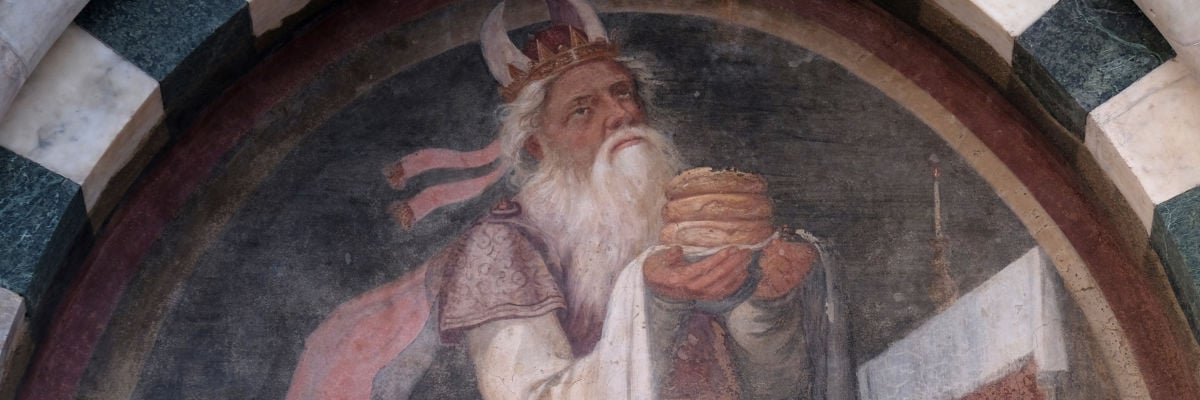
There I was, reading a translation of the Melchizedek Document—that is, manuscript 11Q13, a text from the Dead Sea Scrolls. And my mouth was hanging open in awe.
The Dead Sea Scrolls are a group of mostly Hebrew manuscripts found in the mid-twentieth century that date back to the period between the third century B.C. and the first century A.D. They are a significant resource for understanding the first-century Jewish context of the New Testament.
As for the Melchizedek Document, it details the person of the coming Messiah . . . in terms that read as if they had been copied directly from the New Testament! And this at least a hundred years before Christ was born!
In this article, I’d like to explore some of the details this manuscript relays about the Messiah, and how they corroborate the New Testament’s understanding of Jesus. This will help demonstrate that the New Testament’s claims about the Messiah are legitimately situated within the historical context of Old Covenant interpretations of Scripture.
Many will recall the mysterious figure of Melchizedek, a biblical priest and king of Jerusalem, referenced in the books of Genesis, Psalms, and Hebrews. It is this figure from whom Jesus takes his priesthood, as he is called “a high priest for ever after the order of Melchizedek” (Heb. 6:20).
Some modern readers of the New Testament have the impression that the average Jewish reader in the first century would have found a reference to the Melchizedekian priesthood in relation to the Messiah puzzling. After all, Jewish priests in the first century were not kings and were known to be priests according to the order of Aaron, not Melchizedek.
But the author of the Melchizedek Document has no trouble identifying the Messiah of Israel as Melchizedek himself. In fact, as Michael Wise lays out in his book The Dead Sea Scrolls: A New Translation, the author takes Isaiah 52:7—which tells of “the one who publishes salvation, who says to Zion, ‘Your God reigns”—and connects it to the figure who is called the “Anointed [that is, the Messiah] of the Spirit.” What is even more incredible is that St. Paul, writing in Romans 10:9-10, applies Isaiah 52:7 to the preaching of the gospel of Jesus, which show that the New Testament corroborates this verse as a messianic prophecy. All of this demonstrates that the New Testament was not unusual in connecting the figure of the Messiah to the Melchizedekian priesthood.
Some maintain that the New Testament’s doctrine of the Messiah’s divinity is an entirely novel teaching that clashes with its Old Testament roots. For instance, Jehovah’s Witnesses suggest that the teaching is a fourth-century product of the emperor Constantine and the First Council of Nicaea. Similarly, many Muslim apologists claim that the Old Testament and the New Testament are silent on the divinity of the Messiah and that this Christian doctrine was added much later.
Yet the portrayal of the Messiah as divine is not as foreign to the Old Covenant as some may think. The writer of the Melchizedek Document not only calls the Messiah “divine” (Wise 593), but even replaces God’s divine name (Yahweh) in Isaiah 61:2 with the name of Melchizedek, whom the author already characterized as the Messiah. In other words, the author sees the coming Messiah as Yahweh himself! This connection between Yahweh and the Messiah is also corroborated by Jesus, who applies the divine name “I am” (Exod. 3:14) to himself in John 8:58. Consequently, the New Testament’s portrayal of the Messiah as a divine being is not entirely foreign to Jewish tradition.
One of the most troubling stumbling blocks Jews have with the message of the New Testament is that the Messiah was crucified. For them, the Messiah is to rule the nations as a conqueror, not to die at the hands of his enemies. Though Christians believe that this victorious aspect of the Messiah will be fulfilled in his second coming, some biblical scholars have noted that the prophecy in Daniel 9:20-27, which speaks of the Messiah being “put to death,” includes a timetable that coincides with the life of Jesus. (See Bergsma and Pitre, A Catholic Introduction to the Bible: The Old Testament.) This means there must be two phases to the Messiah: one where he is killed and one where he is victorious.
Interestingly, the author of the Melchizedek Document applies Daniel’s prophecy to the figure of the Messiah, who he also says will release the people of Israel from their sins (Wise, 592). He then connects this figure to the one predicted in Isaiah 61:2, who Jesus claimed to be in Luke 4:16-21. This means that the author believes that the Messiah would be killed, and that his death would atone for the sins of Israel.
Jesus also corroborates the messianic nature of the figure in these texts. Thus, the concept that the Messiah would be killed and atone for the sins of Israel is a notion native to Old Covenant believers. This is stunning, considering that Jewish apologists ardently maintain that the Old Testament nowhere indicates that the Messiah would die, in spite of the suffering servant described in Isaiah 52-53, which they interpret to be the corporate body of Israel, not the Messiah.
For many years, the Dead Sea Scrolls remained largely untranslated and inaccessible to most people. Some speculated that this was because they contradicted Christianity, so Christian translators weren’t overeager to expose a devastating historical counterpoint to their worldview. Conspiracies over what the scrolls actually said abounded—perhaps they showed that the Christian doctrine of the Trinity was heretical, or they confirmed the message of Islam. These conspiracies amassed until there was a breakthrough, and the documents were translated in their entirely. And as it turns out, the Dead Sea Scrolls don’t contradict the Christian message—and, moreover, they actually provide a precedent for parts of the New Testament that some critics of Christianity claim clash with the prophecies and narratives of the Old.
I submit that the Melchizedek document further strengthens this thesis by connecting the Messiah to the figure of Melchizedek, equating the Messiah to Yahweh, and relating the Messiah to the one who is killed for the atonement of Israel.



